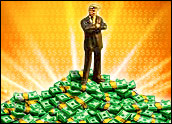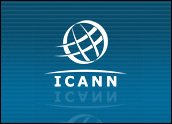
Somewhere out there is a land many have only heard of or seen in their dreams, a place called the “the world’s largest factory.” A nation of manufacturers, a country spread out from one corner to the other, filled with factories, run by dynamic people engrossed in taking care of the world’s supply of everything, from the smallest items to the biggest, from good quality products to best, from low cost to almost free.
The sun is shining over the land called China.
The World’s Largest Shopping Cart
There is also another land that people often dream of, a land of freedom and opportunity, a nation with open hearts and open valets, a land where most roads are still paved with gold, and a generous populace with the greatest appetite to consume devours anything and everything.
These people satisfy their uncontrollable desires with the panic purchases of the all the world’s most expensive and finest items — not to mention the mostly junk items as well. It is a land where the everyday-cheap-prices mantra has driven the nation into klepto-connoisseurs, keepers of neo-junko-memorabilia.
Most everyone here in this land is waiting for the “Antique Road Show” to show up at the door and value their Plastic-BBQ-Picnic-Disposable-Center as a collectible treasure only worthy of a museum.
The sun is also shining over the world’s largest shopping cart, the land of the brave consumers of the USA.
Welcome to the event. Here extreme manufacturing meets extreme consumption. The sidekick nations simply dance around the leftover inventories and surplus raw materials. The other remaining 200 nations simply pray and hope that the mating of these two elephants will result in some romance with true love. The trade imbalances are way out of synch; envy and jealousy are the spoilers of this romantic tango of the two odd nations.
Issue #1: Extreme Manufacturing
Right now, the manufacturing base of China is only going through its early cycles of the yet-to-come production revolution, driven by advanced technology. It is a place that the U.S. scoffed at during the ’90s, abandoning manufacturing to embrace a service and information based economic model.
China is clearly poised to work toward a much higher quality and higher speed of production, leading to global dominance in the supply of finished goods.
So, are Western entrepreneurs exploring joint manufacturing in China for local and global consumption? Why not, and if so, why so little?
Issue #2: The Red Culture
The language and the mystery of the Chinese culture are far too foreign to most Western nations.
Although many who engage in frequent visits to their local downtown Chinatown consider themselves experts, very few have seen the real thing. Only in the last decade has travel to China become significant. Last year, 16 million foreigners visited the country, and that number will double every year.
The Westerners who arrive in China are simply shocked to see the growth and quality of life and products that exist there.
Issue #3: Global Business Thinking
Excluding the big Western multinationals, there is no presence of Western businesses in the country at a small- or medium-enterprise level, despite how much easier it is to do business with China than one would think.
The Chinese business community is very much outward-bound in their business thinking, and extremely export-minded. This is unlike the U.S. or the West, where we are very outward-bound when it comes to photo trips and personal travel but flatly scared of exporting business alliances to China for fear of foreign issues and languages.
The World’s Most Powerful Tool
Getting information in a form that is readily explainable to foreign markets is always a challenge and for that reason there are a lot of organizations that publish trade directories and commercial guides. Europeans have mastered the art of the directory, publishing such things over a long history and perfecting it in the last quarter of the last century. Now with the invention of e-commerce portals, this business information is far more faster and more interactive than ever.
Asia, on the other hand, is still exploring hard-to-get information to attract alliances and business exchange. Asian languages are a big factor in this exercise.
Enter Charles Chaw, a 35-year-old dynamic entrepreneur from Singapore, aka the land of the lions, strolling at the world’s stage. Educated and trained in investment banking, Chaw is fully organized, creating knowledge-based publishing and research organizations that stretch all the way from Singapore to China.
China Knowledge is responsible for creating a series of well-written and well-produced guides, designed to deliver in-depth and objective information on various business sectors of China. This young company is offering all this knowledge in print, TV and Internet media.
There are a lot of other players, but according to CEO Chaw, “We are preparing information for the global business markets and for the global business community to understand the workings in China.” He adds, “We will offer a full media organization offering business information on highly interactive platforms.”
Hidden Opportunities
This sounds like a great solution for the Western business community to embrace and explore hidden opportunities in the largest factory of the world. After all, information is always the most powerful tool.
The world’s largest factory and the world’s largest shopping cart must now learn how to share the fine processes of continued success and use exchange of information as a solid base with open dialogue as the main ingredient.
Naseem Javed, author of Naming for Power and alsoDomain Wars, is recognized as a world authority on global nameidentities and domain issues. Javed founded ABC Namebank, aconsultancy he established a quarter century ago, and conducts executiveworkshops on image and name identity issues. Contact him at [email protected].




















































Social Media
See all Social Media